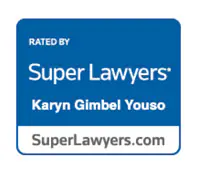FAQs
How long does it take to get divorced in Wisconsin?
In Wisconsin, a person cannot obtain a divorce/separation until at least 120 days have passed from the date both parties receive notice that a divorce action is pending. Traditional divorces can take as long as necessary, but most divorces are wrapped up within 12 months. If there are bitter child custody or property disputes, it is not unusual for the process to last an additional 6-12 months beyond the standard one year mark. In Collaborative Divorce, the average case lasts 4-6 months, depending upon the availability of the parties and their team. More emotionally difficult cases last longer.
What is Collaborative Law/Divorce?
Please visit the website of the Collaborative Family Law Council of Wisconsin, at www.collabdivorce.com, for a detailed description of the collaborative process and its many benefits, as well as many other frequently asked questions about collaborative law. There is also a wealth of information at the international collaborative website sponsored by the International Academy of Collaborative Professionals, at www.collaborativepractice.com.
Can one lawyer represent both spouses?
Which is better, traditional divorce, or Collaborative divorce?
There is no question that lower conflict is healthier for couples and their children. Collaborative divorce has a better chance of mitigating conflict, because it employs a team of well-qualified professionals to assist parties in all aspects of their divorce: legal, financial, and emotional. Most cases are suitable for Collaborative process.
Those that aren’t suitable may include serious power imbalances (such as in cases with severe domestic violence), extreme addictions or mental health pathologies, or couples with few assets and no kids who might otherwise get along and could resolve their differences cooperatively in the traditional model. Otherwise, Collaborative law offers the parties the opportunity to “think outside the box” in crafting creative solutions to their marital issues, taking into consideration the best interests of ALL family members at ALL times.
How is legal separation different from divorce?
The procedures for divorce and legal separation are essentially the same. The actions are filed in the same way and proceed the same way through the court’s calendar. And, the end result for both will be a final judgment which divides assets and debts, determines financial obligations between the spouses, and establishes placement and custody rights to the children. However, a legal separation is different from a divorce. If you are legally separated, you cannot marry anyone else until the legal separation is converted to a divorce, and then you must wait six months to marry after this is done. Also, if you are legally separated and you reconcile with your spouse, you can dismiss the legal separation and thus restore the marriage.
By comparison, if you divorce, you have 6 months to ask the court to vacate the judgment of divorce to restore the parties to their married status. Thereafter, you would have to remarry your spouse. Also, in some circumstances, one spouse is eligible for continuing health coverage from the other spouse’s employer, even after a legal separation is granted. The same is not true with a divorce. A legal separation can last forever. At some point, it may be dismissed/vacated, allowing the parties to be husband and wife again. Or, it may be converted to a judgment of divorce. This can be done at any time if both parties agree, or after one year has passed even if only one party wishes to convert it to a divorce.
What are the issues involving children and how are they decided?
Custody and placement: Wisconsin defines custody as the power to make major decisions in a child’s life, such as religion, education, and medical care. Joint custody involves both parents cooperating in making these decisions. Sole custody means only one parent makes these decisions. Placement is how the child’s time is divided between the parents. A parent may have primary placement, meaning the child lives with that parent the majority of the time, while the other parent has secondary placement, commonly referred to as visitation. Increasingly, parents have shared placement of the children, and a flexible schedule is worked out to maximize each parent’s time with the kids, while taking into consideration how structure and routine is important for a child.
If either custody or placement is in dispute in a divorce, the court orders that both parties go to mediation, which is a meeting between yourself, your spouse, and a neutral counselor/mediator who will help the two of you reach an agreement on your own. If this is successful, the counselor will reduce the terms of the agreement to writing, and will have both spouses sign it. If mediation is not successful, the Court appoints an attorney to represent the children’s best interests.
This attorney is called a Guardian Ad Litem. The attorney will do an investigation, sometimes assisted by a social worker, to determine what placement and custody arrangements will be best for the children. The guardian ad litem then makes a recommendation to the court. If the parties still cannot reach an agreement on these issues, despite the guidance given by the Guardian ad Litem, the court will hold a trial, and the parties must present evidence to the court of why his or her position should prevail.
Child support: Normally, the court will order a spouse who does not have primary placement of the children to pay a certain percentage of his or her income to the spouse with primary placement. If placement is shared, both parties’ incomes factor in the decision of what is an appropriate amount of support. Parties who engage in Collaborative divorce often find themselves using the state support guidelines as a starting point, rather than as an ending point.
Other financial issues: The court also has to determine who pays the uninsured medical expenses of the children, who must provide health insurance coverage for the children, and who gets to claim the children as dependents and exemptions for tax purposes. Generally, parties share in the cost of non-covered medical expenses, divide the tax benefits, and may or may not contribute to the insurance premiums.
What is maintenance and how will it be determined?
Maintenance is spousal support, also called alimony. There is no standard formula for determining maintenance, as it is based upon a number of factors. Two of the most important factors are the length of the marriage and the difference in the income of the parties. For example, if the parties were married for a long time and one spouse makes a lot more money than the other, it is likely that the court will order the higher-paid spouse to pay maintenance to the other spouse.
The court will have to determine the amount of the maintenance, and the term (for how long will it be paid). Factors to be considered include, the needs of the kids, the traditional role of that spouse in the marriage and his/her earning capacity, whether that spouse contributed to the earning capacity of the paying spouse, and the level of education of each party. Maintenance is awarded based upon need, and fairness.
How much will my divorce cost in Wisconsin?
Divorce costs depend on your situation. A cooperative litigation case involving no kids and few assets to divide, handled amicably may cost as little as $3,500. The figure goes up from there depending on the issues involved, whether a Guardian Ad Litem is necessary to handle disputes over children, whether the case involves domestic abuse or substance abuse, the degree of communication between the parties, and the parties’ willingness to compromise. Traditional divorces which involve domestic violence or having bitter custody/placement disputes might cost as much as $25,000-100,000 for high conflict litigation.
Collaborative divorces usually generate less attorneys’ fees than in traditional high conflict litigation, but the cost savings again depends on the willingness of the parties to communicate and compromise. Costs are also driven by the competency and professionalism of your spouse’s attorney. Some attorneys are more “aggressive” than others. This does not mean they fight harder or better for their clients. It might simply mean they would rather fight (and generate fees) than work toward compromise. Fights always cost more than compromise, both economically AND emotionally. Be wary of the attorney who bills himself as “aggressive,” as it is no guarantee you will get the results you want in your case — but you will certainly pay for the fight.
What if only one person wants the divorce/separation?
What is a financial disclosure statement in a divorce?
Both parties are required to submit complete and accurate financial disclosure statements during the divorce process.
A financial disclosure statement lists a party’s known assets, debts, income, and monthly expenses. Not limited to including:
- Credit card bills
- Mortgages
- Auto Loans
- Life insurance policies
- Retirement accounts
- Investments
All information given must be accurate, or you could be held solely liable for any debt not disclosed down the road. We will compare the information of you and your spouse to determine any discrepancies between assets and debts.










